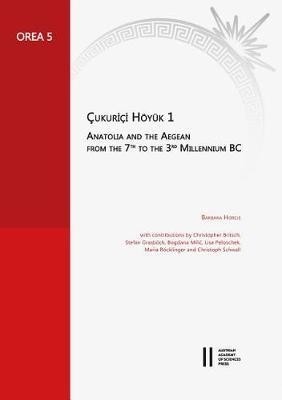The 5th volume of the publication series Oriental and European Archaeology represents the overture of the Çukuriçi Höyük final publications. The prehistoric tell site at the Aegean coast of Turkey close to the antique metropolis of Ephesos has been excavated between 2007 and 2014. The study includes a general outline of the research project, its main methodological and analytical approaches, and its main outcome after seven excavation seasons in chapter 1. A list of all currently published papers and books should offer the reader further detail aspects, which are not repeated in this volume. Chapters 2 to 6 deal with several new results of Çukuriçi Höyük research in a diachronic perspective. The Neolithic settlements dating to the 7th millennium BC are presented in aspects of technology and raw material procurement. Especially, the role of pressure technology in the Neolithisation process is widely discussed to contextualise the 7th millennium lithic assemblage of the site in broader cultural developments. The Late Chalcolithic and Early Bronze Age settlements of 4th and 3rd millennia BC are presented in various aspects highlighting distinct regional and trans-regional networks. Two marble figurines of that date are used to re-evaluate the origin and development of early schematic figurines in western Anatolia and the Aegean. The analysed textile production in 4th and 3rd millennia demonstrates shared commonalities and regional connectivities as well. The micro-analyses of an Early Bronze Age metal workshop reconstruct the continuities and changes within a few generations. The diachronic pottery analyses are offering not only the main ceramic fabrics based on petrography and geochemistry from 7th to 3rd millennium BC; also the detected clay sources in the region are presented and discussed for the first time. All detail studies of the Çukuriçi Höyük 1 volume are embedded in a broader Aegean-Anatolian view to gain a sustainable cultural and geographical contextualisation of the excavation results.
There are no reviews for this book. Register or Login now and you can be the first to post a review!









